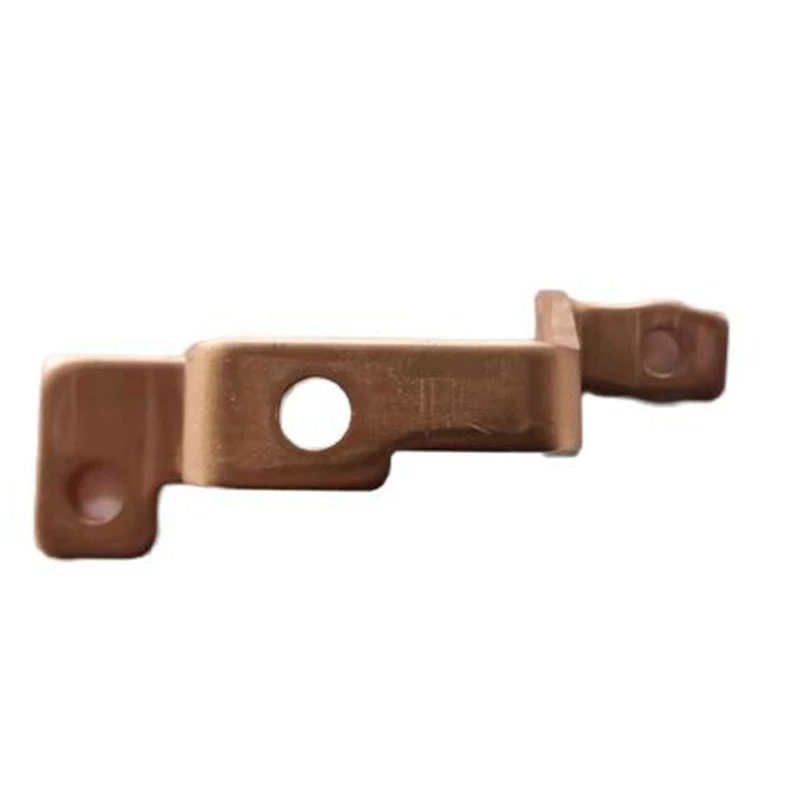stamping parts price
Understanding Pricing for Stamping Parts A Comprehensive Overview
Stamping parts play a crucial role in various industries, from automotive to electronics, due to their precision and efficiency in manufacturing. As a result, pricing for stamping parts can be a significant consideration for businesses looking to integrate them into their production processes. This article will delve into the factors that influence the pricing of stamping parts, the importance of cost analysis, and how companies can optimize their purchasing strategies.
Factors Influencing Stamping Parts Pricing
1. Material Costs The type of material used for stamping parts has a direct impact on their price. Common materials include steel, aluminum, and brass, each of which has different costs associated with them. For instance, stainless steel parts often come at a premium due to the material’s durability and corrosion resistance.
2. Complexity of Design The complexity of the part design significantly affects pricing. More intricate designs may require specialized dies and tooling, which can increase the production costs. A simple, flat-stamped component will generally be less expensive than a complex part that requires multiple stages of stamping.
3. Production Volume The order quantity is another critical factor. High-volume production typically leads to lower per-unit costs due to economies of scale. Conversely, low-volume orders might not benefit from these savings and can incur higher costs per part.
4. Tooling and Setup Costs The initial investment for manufacturing stamping parts often includes the cost of tooling and setup. Custom dies can be an expensive upfront cost but are necessary for producing parts with high precision. These costs need to be distributed across the production run, affecting the overall pricing of each part.
5. Lead Times Suppliers may charge a premium for expedited lead times. Businesses should consider the trade-off between faster delivery and cost. Planning ahead can reduce urgency and help lower overall expenses.
6. Supplier Relationships Established relationships with reliable suppliers can lead to better pricing. Strong partnerships may offer advantages such as discounts, flexibility in production schedules, and access to innovations that could reduce costs.
7. Market Trends and Dynamics The overall market demand for specific types of stamping parts can fluctuate, impacting pricing. For instance, if the automotive industry observes a surge in demand for electric vehicle components, the prices for certain stamping parts may increase due to heightened competition among manufacturers.
stamping parts price

The Importance of Cost Analysis
To navigate the complexities of pricing, businesses must conduct thorough cost analyses. This involves breaking down costs associated with materials, labor, overheads, and additional factors mentioned above. Understanding these elements can help companies make informed decisions about which suppliers to work with, how to optimize production processes, and where to seek savings.
Cost analysis also enables businesses to set appropriate budgets for projects involving stamping parts, ensuring that they remain within financial constraints while still receiving quality components. By evaluating the total cost of ownership (TCO), which includes production, transportation, and storage costs, a company can better assess the financial impact of its procurement strategies.
Optimizing Purchasing Strategies
1. Bulk Purchasing Consider negotiating bulk purchasing agreements to lower per-unit costs. Suppliers often provide discounts for larger orders, which can lead to significant savings.
2. Supplier Diversification To mitigate risk and ensure competitive pricing, it’s beneficial to establish relationships with multiple suppliers. This diversification can help in obtaining better pricing and ensure consistency in supply.
3. Investing in Design for Manufacturability (DFM) Engaging in DFM during the design phase can reduce production costs. By designing parts that are easier to stamp, companies can minimize material waste and reduce the complexity of tooling requirements.
4. Continuous Monitoring of Market Conditions Keeping abreast of market conditions, material prices, and technological advancements can help businesses anticipate changes in pricing and adjust their strategies accordingly.
5. Feedback and Collaboration Effective communication with suppliers can lead to improvements in pricing structures. Feedback on your purchasing behavior can help suppliers offer better terms tailored to your needs.
In conclusion, understanding the factors that affect the pricing of stamping parts is essential for businesses looking to optimize their manufacturing processes. By conducting comprehensive cost analyses and strategically managing supplier relationships, companies can achieve significant cost savings while ensuring high-quality component production. The journey of sourcing stamping parts may be intricate, but with informed strategies, it can lead to enhanced operational efficiency and competitive advantages.
-
Precision Casting Prototypes and Engineering Inc – Innovating Global Manufacturing SolutionsNewsNov.24,2025
-
Precision Casting Facility: Advanced Manufacturing for Global Industries | Hairun SourcingNewsNov.23,2025
-
Leading Precision Casting Corporation: Quality Metal Components for Global IndustryNewsNov.23,2025
-
Precision Cast Rods: Definition, Applications & Future Trends in ManufacturingNewsNov.22,2025
-
Precision Cast Iron Surface Plate: The Backbone of Industrial Accuracy and QualityNewsNov.21,2025
-
Precision Aluminum Investment Casting: High-Accuracy Manufacturing for Modern IndustriesNewsNov.20,2025















